41 calorimetry practice worksheet answers
Vector Addition and Subtraction - Problems – The Physics ... worksheet-addition.pdf Determine the magnitude (in centimeters) and direction (in standard form) of the resultant vector B + A for each of the combinations below. Measure its length in centimeters and direction angle in standard form (i.e.; right 0°, up 90°, left 180°, down 270°, etc.). Use the horizontal reference lines as needed. Home | ExploreLearning We make math and science learning seriously fun | ExploreLearning
Worked Chemistry Problem Examples - ThoughtCo 22.11.2019 · Included in this list are printable pdf chemistry worksheets so you can practice problems and then check your answers. You may also browse chemistry problems according to the type of problem. You may also browse chemistry problems according to the type of problem.

Calorimetry practice worksheet answers
Calorimetry Practice Problems Calorimetry Practice Problems (Answers) 1. How much energy is needed to change the temperature of 50.0 g of water by 15.0oC? 3135J 3140J (rounded answer for sig. figs.) 2. How many grams of water can be heated from 20.0 oC to 75oC using 12500.0 Joules? 119.6 g 120 g (rounded answer for sig. figs) 3. 4.1 Writing and Balancing Chemical Equations - OpenStax It is common practice to use the smallest possible whole-number coefficients in a chemical equation, as is done in this example. Realize, however, that these coefficients represent the relative numbers of reactants and products, and, therefore, they may be correctly interpreted as ratios. Methane and oxygen react to yield carbon dioxide and ... Buy and sell the best textbook notes, study guides, class ... Docmerit is the online marketplace for buying and selling study documents, such as lecture notes, summaries, practice exams and more. 0 Shopping cart · 0 item · $0.00
Calorimetry practice worksheet answers. Join LiveJournal Password requirements: 6 to 30 characters long; ASCII characters only (characters found on a standard US keyboard); must contain at least 4 different symbols; Chemistry - Wikipedia Chemistry is the scientific study of the properties and behavior of matter. It is a natural science that covers the elements that make up matter to the compounds composed of atoms, molecules and ions: their composition, structure, properties, behavior and the changes they undergo during a reaction with other substances. Thomas Greenbowe | Department of Chemistry and Biochemistry Oct 16, 2017 · 2015–present Senior Instructor II, University of Oregon. 2013–2015 Morrill Professor, Iowa State University. 1998-2013 Professor of Chemistry, Iowa State University. 2013-2014 Visiting Lecturer, University of Oregon. 2006 Visiting Professor, University of Arizona. 1990-1998 Associate Professor, Iowa State University, 1988-1990 Associate Professor of Chemistry and Director of Freshman ... Classzone.com has been retired - Houghton Mifflin Harcourt Connected Teaching and Learning from HMH brings together on-demand professional development, students' assessment data, and relevant practice and instruction. Professional Development Providing professional development for teachers, HMH’s professional learning courses, coaching, and leadership advisory supports educators every step of the way.
Buy and sell the best textbook notes, study guides, class ... Docmerit is the online marketplace for buying and selling study documents, such as lecture notes, summaries, practice exams and more. 0 Shopping cart · 0 item · $0.00 4.1 Writing and Balancing Chemical Equations - OpenStax It is common practice to use the smallest possible whole-number coefficients in a chemical equation, as is done in this example. Realize, however, that these coefficients represent the relative numbers of reactants and products, and, therefore, they may be correctly interpreted as ratios. Methane and oxygen react to yield carbon dioxide and ... Calorimetry Practice Problems Calorimetry Practice Problems (Answers) 1. How much energy is needed to change the temperature of 50.0 g of water by 15.0oC? 3135J 3140J (rounded answer for sig. figs.) 2. How many grams of water can be heated from 20.0 oC to 75oC using 12500.0 Joules? 119.6 g 120 g (rounded answer for sig. figs) 3.




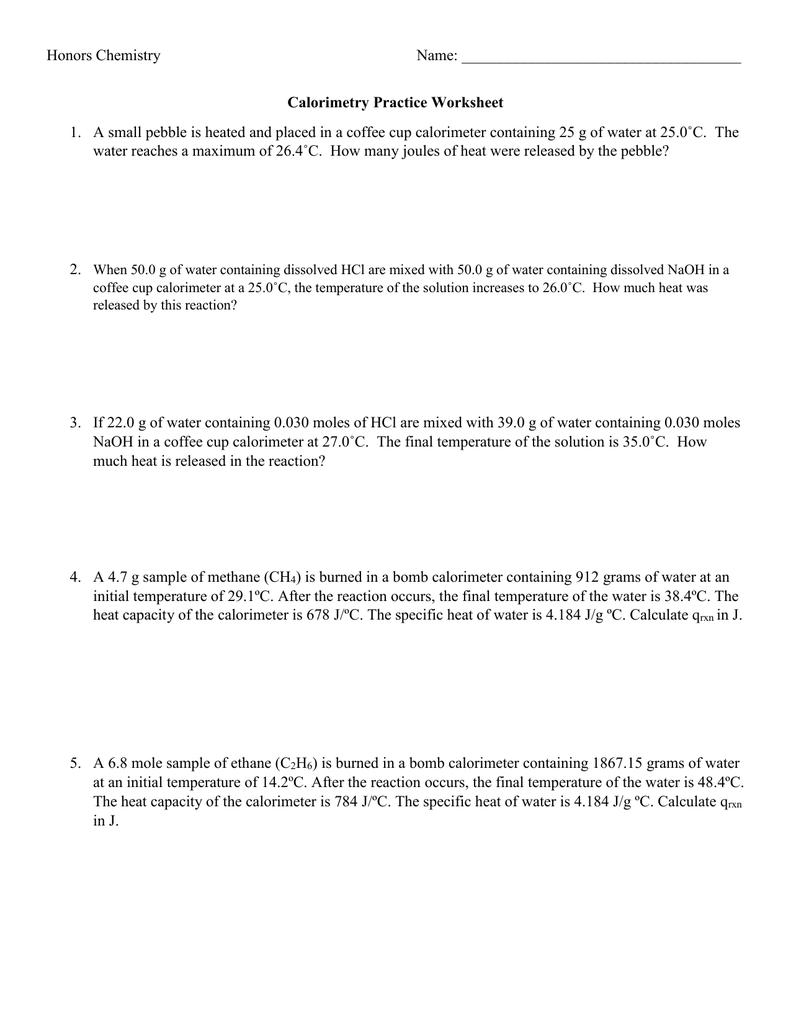

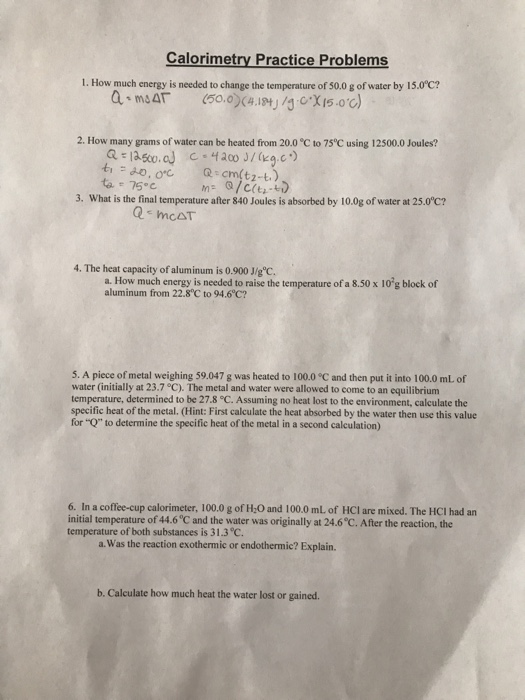
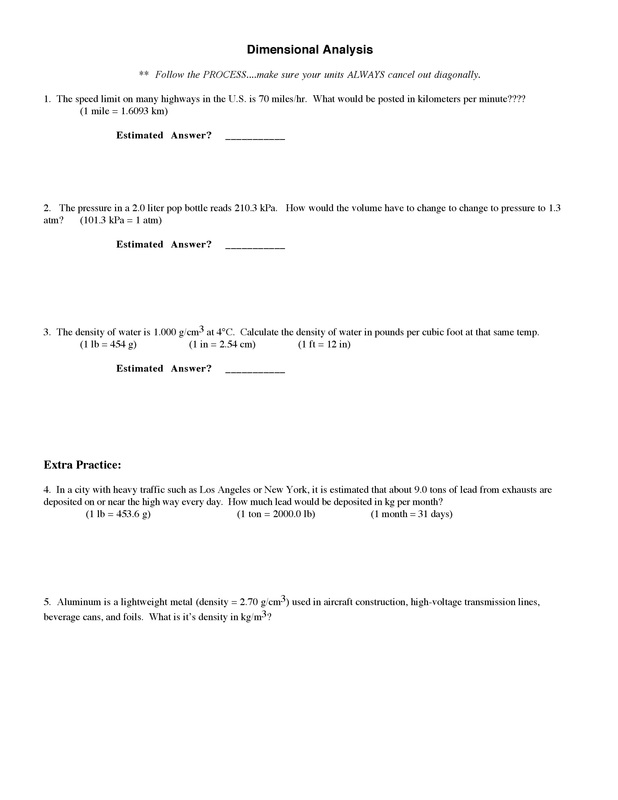


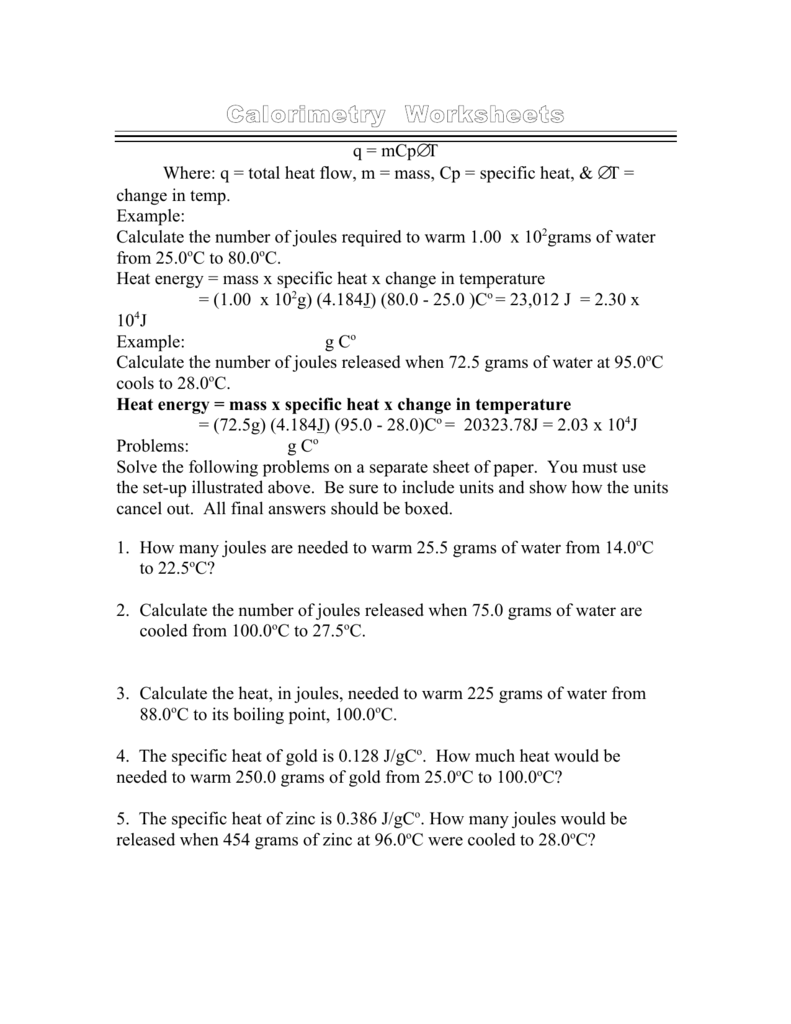
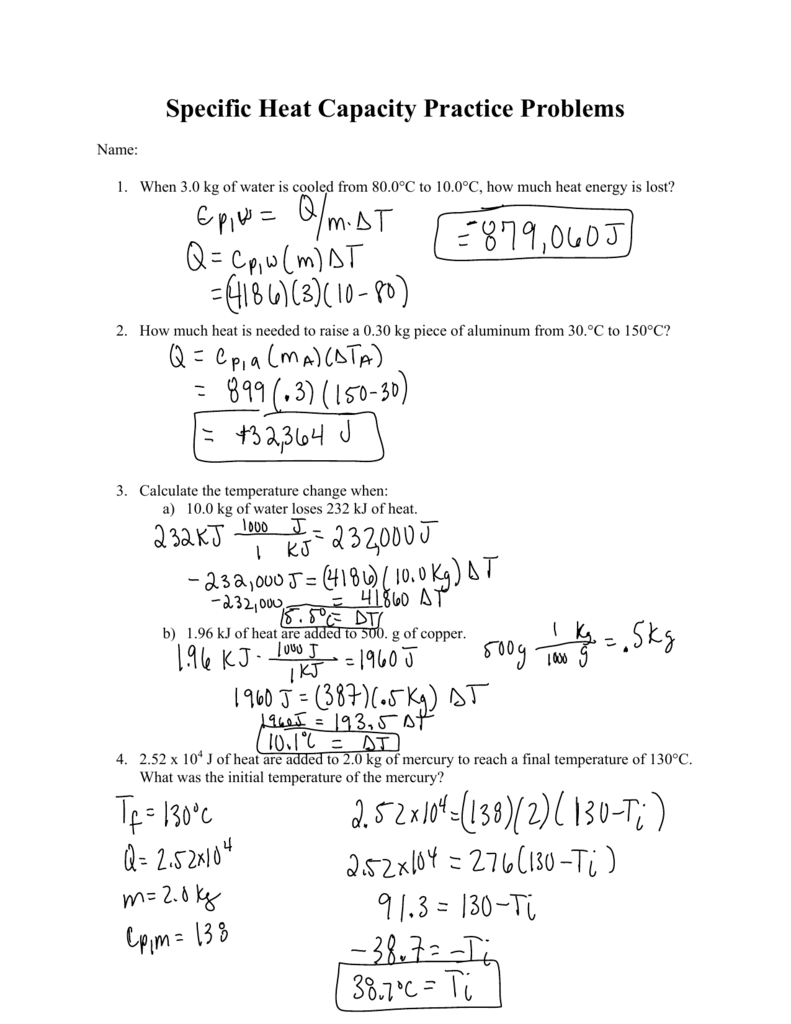

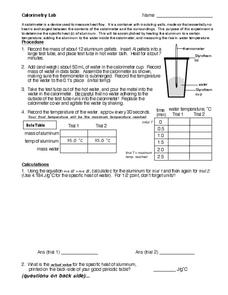

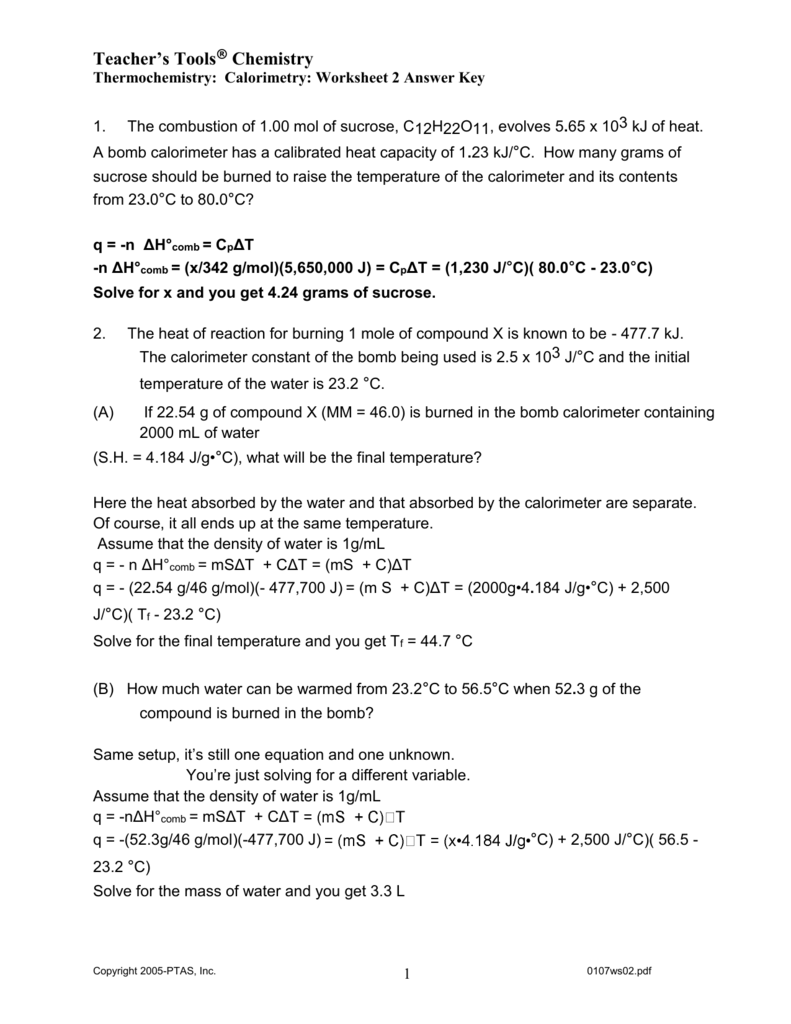
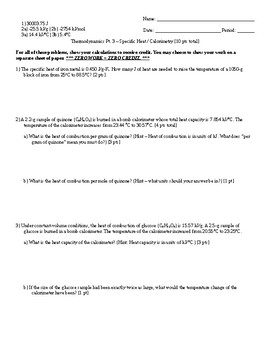



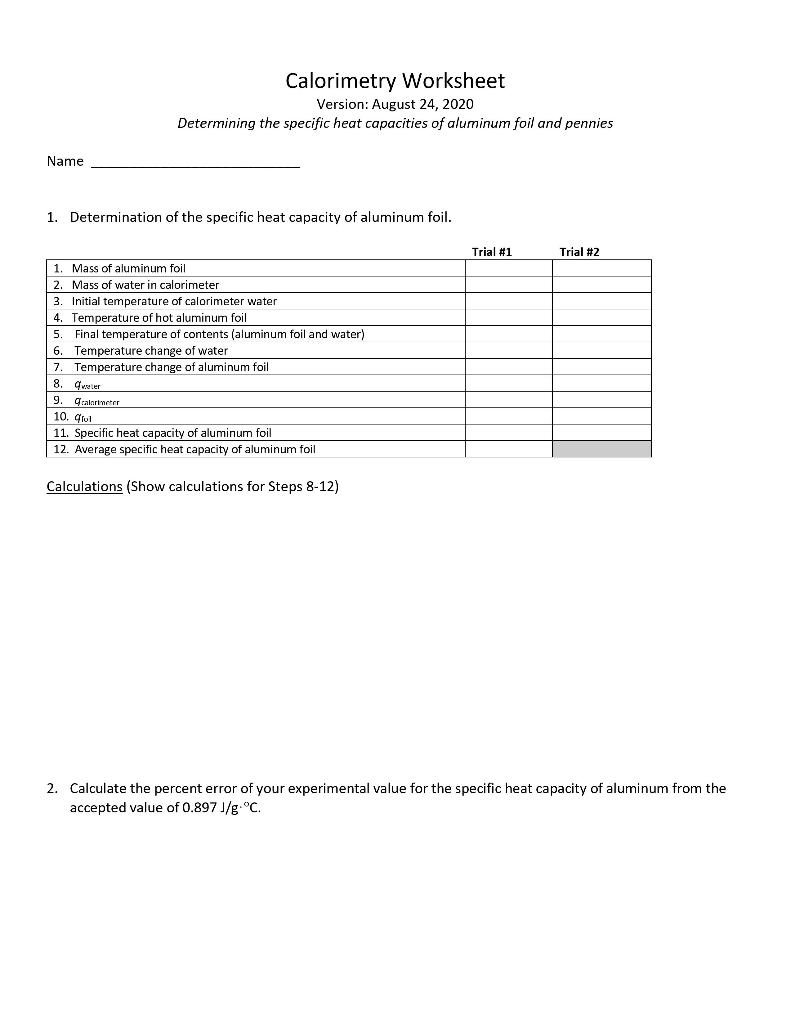





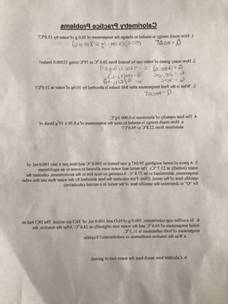
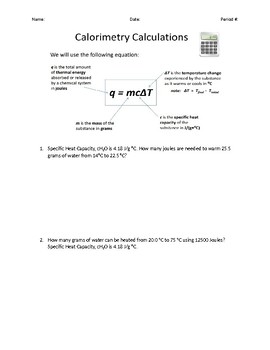



0 Response to "41 calorimetry practice worksheet answers"
Post a Comment